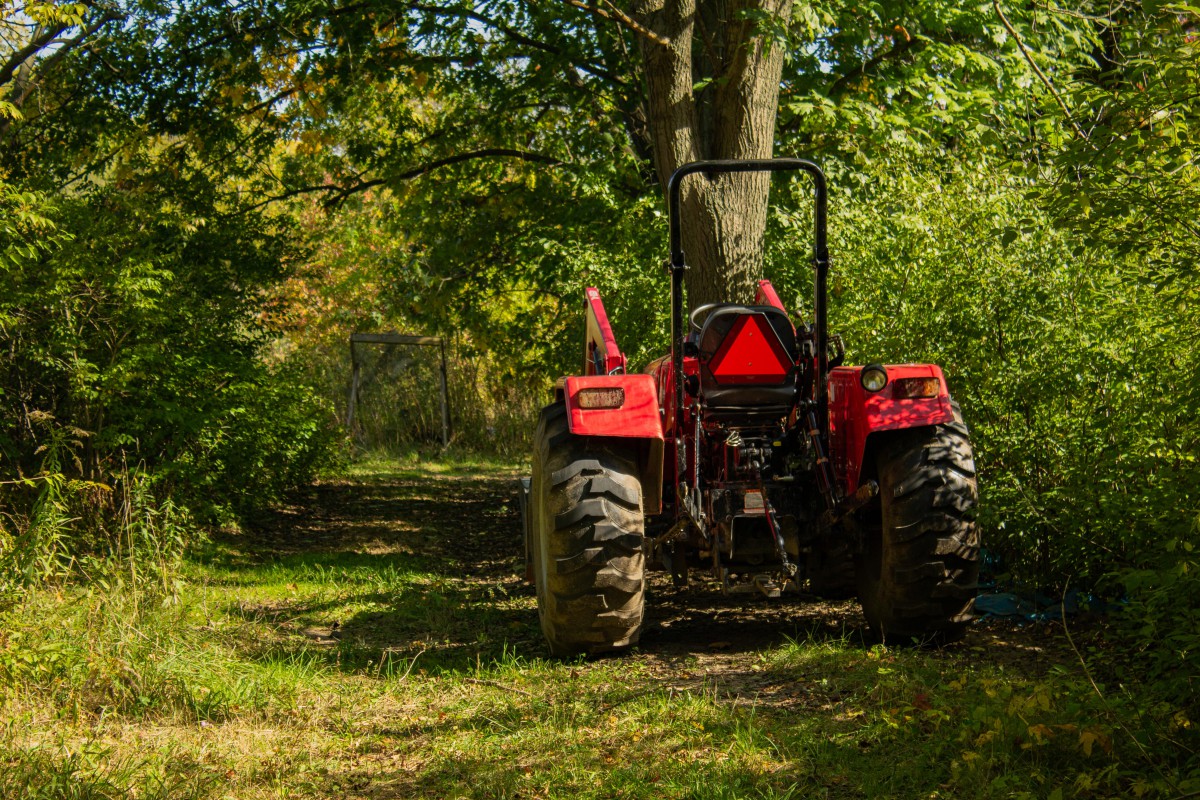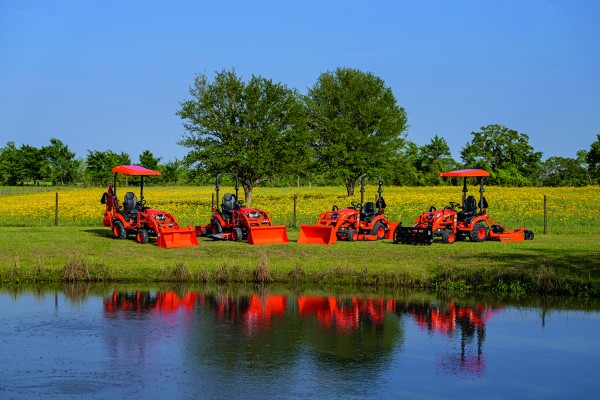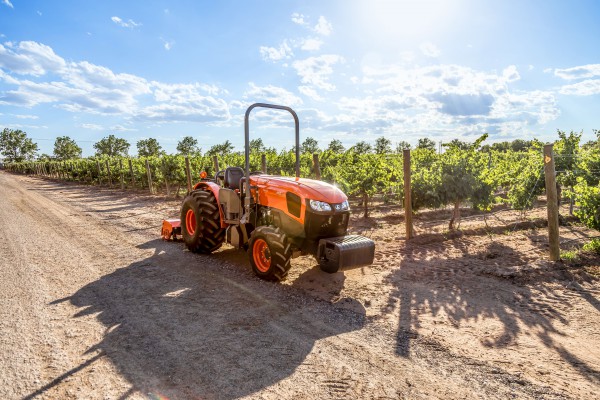
Hay and farm implements are costly investments that require proper care to function effectively. Routine maintenance boosts farm productivity, ensures smooth operations during harvest season, and prevents breakdowns.
Rather than waiting for issues to arise, performing routine upkeep keeps equipment operational and reduces repair costs, with Kubota equipment saving time and money through efficient maintenance.
Maintaining these tools is a critical step in any farm’s success. Well-maintained equipment guarantees a strong yield and ensures the hay remains nutritious for livestock.
Understanding Maintenance and Why It’s Done
The backbone of any productive farm is its equipment. Machinery must be fully functional to support smooth cutting, baling, and storage of hay, all essential for hay and farm implements.
Reliability drives precision, efficiency, and cost management, underscoring the importance of maintenance. Regular care keeps operations running smoothly, prevents breakdowns and improves farm productivity.
How Maintenance Influences Efficiency on the Farm
Robust machinery is essential for hay production and harvesting tasks. Here are key benefits of maintaining hay and farm implements:
Enhanced Efficiency
A well-maintained mower, rake, or baler operates at peak performance, completing tasks faster. This is critical during harvest season, when delays can degrade hay quality.
Reduced Fuel Consumption
Cleaned moving parts, such as filters, fuel lines, and hoses, along with lubricated engines, reduce effort and fuel use. Proper blade sharpness and tire pressure further optimize savings, lowering costs over time.
Immaculate Quality of Hay
Poorly maintained equipment cuts hay unevenly, introducing contaminants that lower quality. Maintained balers produce tight, uniform bales that store well and retain nutritional value.
Reduced Downtime
A machinery breakdown can halt farm operations, especially during time-sensitive tasks like hay harvesting. Routine maintenance minimizes these risks, ensuring consistent farm productivity.
Important Factors of Equipment Wear and Tear
Agricultural machinery faces harsh conditions that cause gradual wear. Identifying these factors allows farmers to take preventive measures for their hay and farm implements.
Exposure to Dirt and Moisture
Dirt, oil, and plant debris can clog filters and impair operations. Moisture leads to rust, corrosion, and hydraulic system failures.
Temperature Fluctuations
Extreme cold freezes fluids and makes seals brittle, while intense heat overworks engines. Seasonal changes also degrade rubber and metal components.
Heavy Usage and Overloading
Properly maintained machinery simplifies tasks, but overloading tractors or balers stresses gears, belts, and hydraulics, causing damage like belt wear or engine overheating.
Lack of Proper Storage
Equipment stored outdoors under sun or snow suffers long-term damage, including rotting tires, rusted parts, and faded finishes.
Skipping Routine Inspections
Minor issues like leaks or loose bolts, if ignored, escalate into major failures over time.
Preventive Maintenance Cost-like Benefits:
Routine maintenance may seem like an added expense in the short term, but it enhances farm productivity and reduces long-term repair costs.
Decrease Maintenance Costs
Regular tasks like oil changes, filter replacements, and belt or spark plug swaps prevent larger, costlier failures, saving farmers from expensive engine repairs.
Lifespan of Equipment Is Increased
Investing in tractors, balers, and mowers pays off over time, but neglecting maintenance shortens their lifespan. Proper care extends equipment durability, reducing replacement costs.
Saves on Fuel and Energy Expenses
Well-tuned equipment with clean engines uses less fuel, cutting operational costs significantly over time.
Preventing Delays in Harvesting
Equipment breakdowns during harvest can lead to repair costs, lost productivity, and crop losses. Routine maintenance ensures machinery is ready for critical tasks, avoiding such setbacks.
Regular Maintenance Schedule of Hay and Farm Machine Tools

Maintaining hay and farm implements requires a multi-step approach: pre-season servicing, periodic inspections, and operational care. A consistent schedule prevents losses from improper upkeep.
Here is a table of tasks and their frequencies:
|
Category |
Task |
Frequency |
|
Fluids & Lubrication |
Check oil, coolant, and hydraulic fluid levels |
Daily |
|
Grease moving parts (joints, pivots, PTO shafts) |
Weekly & Monthly |
|
|
Tires & Belts |
Inspect tires for inflation and damage |
Daily |
|
Check belts for tension and wear |
Weekly |
|
|
Hydraulics & Fasteners |
Inspect hydraulic hoses and fittings for leaks |
Weekly |
|
Tighten loose bolts and fasteners |
Weekly |
|
|
Cleaning & Storage |
Clean dirt, dust, and debris from equipment |
Daily |
|
Store machinery in a dry, covered space |
Seasonal |
|
|
Part Replacements |
Replace worn-out belts, chains, and bearings |
Monthly & Seasonal |
|
Clean or replace air and fuel filters |
Weekly |
Daily Maintenance Routine
Daily routines prevent small issues from escalating, enhancing farm productivity. Tasks that don’t require starting the machine can be done before the day begins.
Checking oil, coolant, and hydraulic fluid levels is essential. Low or contaminated fluids can cause overheating, poor performance, or engine failure.
Tire inspections for inflation and wear prevent strain and blowout risks.
Moving parts exposed to dirt, dust, and plant debris need daily cleaning to maintain efficiency and prevent premature wear.
Weekly and Monthly Maintenance Routine
Weekly and monthly maintenance ensures hay and farm implements remain reliable. Beyond daily checks, a consistent schedule optimizes performance.
Lubricating joints, pivots, and bearings reduces friction and wear, ensuring smooth operation. Greasing these parts is a critical task.
Inspecting fasteners, straps, and belts for tightness or wear prevents inefficiency and breakdowns during use.
Checking hydraulic hoses for leaks and secure fittings maintains system efficiency, as even small leaks can cause significant drops in performance.
Seasonal and Off-Season Maintenance
Servicing hay and farm implements at season’s end ensures safe storage and prevents degradation, keeping equipment ready for use.
Draining old fuel and adding stabilizers prevents degradation and blockages in fuel lines, avoiding start-up issues when resuming operations.
Replacing worn parts like baler belts, mower blades, and rake tines during off-season prepares machinery for the next season. These components endure heavy wear and significantly affect performance if neglected.
Keeping The Hay Equipment In Order
Proper maintenance tailored to specific hay and farm implements prevents issues and ensures durability. Here’s how to care for key tools:
Mowers and Mower-Conditioners
Mowers and mower-conditioners start the hay harvest process and must remain in top condition. Cleaning blades after use to remove plant debris and dirt maintains cutting efficiency. Neglecting this slows performance over time. Worn rollers in conditioners unevenly dry hay, reducing quality, so regular upkeep is essential.
Hay Rakes and Tedders
Rakes and tedders organize hay for drying. Greasing moving parts reduces wear and extends their lifespan. Bent or broken tines disrupt raking, leaving hay behind or forming uneven windrows. Replacing worn tines ensures even collection and distribution.
Balers (Round & Square)
Round and square balers require careful maintenance to avoid costly repairs. Belts, chains, and rollers need regular attention, as neglect leads to uneven bales and storage issues. Monitoring hydraulics for leaks or pressure problems maintains efficiency.
Bale Wrappers and Associated Storage Devices
Bale wrappers protect hay from moisture and pests. Cleaning wrapping arms prevents dirt buildup that disrupts coverage, ensuring tight, even wraps. Proper care and storage keep hay in excellent condition for longer.
Proper Care for Long-Lasting Farm Machinery

A preventive maintenance plan ensures hay and farm implements operate efficiently, saving money over time.
Routine care reduces stress during operations by addressing daily and weekly tasks. Fixing minor issues early prevents future disruptions to farm productivity.
H&R Agri-Power offers guidance, services, parts, and suggestions to improve maintenance. Contact them for advice or repairs.

